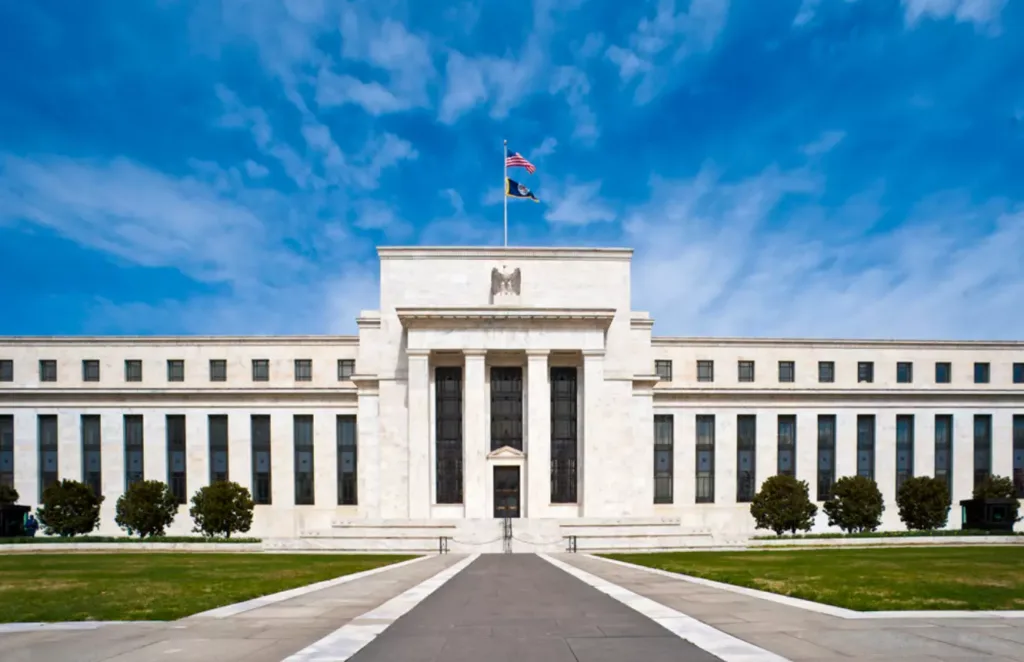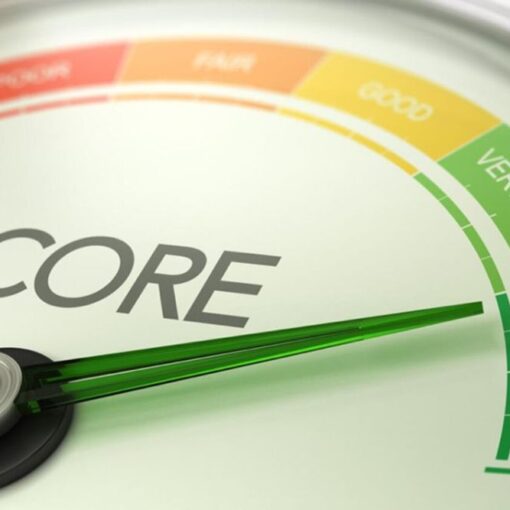
In the realm of finance and economics, few events garner as much attention and speculation as Federal Reserve or Fed interest rate hikes. These seemingly small adjustments in interest rates have far-reaching consequences that can influence various aspects of our lives, from mortgage rates and credit card payments to stock market performance and overall economic growth. Understanding what Fed interest rate hikes mean is vital for both individual investors and businesses alike.
In this comprehensive guide, we will delve deep into the intricacies of Fed interest rate hikes and explore their implications on the economy, investments, and personal finances. We will provide expert insights backed by credible sources to help you grasp the significance of these rate changes fully.
Table of Contents
What Fed Interest Rate Hikes Mean
The term “Fed interest rate hikes” refers to the actions taken by the Federal Reserve to increase the federal funds rate, which is the interest rate at which depository institutions lend reserve balances to other depository institutions overnight. This fundamental monetary policy tool is employed by the Federal Reserve to achieve its dual mandate of maintaining stable prices and fostering maximum sustainable employment.
Fed interest rate hikes signal a tightening of monetary policy and often occur during periods of economic expansion when inflation pressures are rising. Conversely, during economic downturns, the Fed may lower interest rates to stimulate borrowing, spending, and investment, thus aiding economic recovery.
Now, let’s explore the various aspects of what Fed interest rate hikes mean:
Impact of Fed Interest Rate Hikes on Borrowing Costs
Fed interest rate hikes have a direct impact on borrowing costs across various financial products. When the Fed raises interest rates, it becomes more expensive for consumers and businesses to borrow money. Let’s take a closer look at the implications on different types of borrowing:
- Mortgages: Higher interest rates lead to increased mortgage rates, making homeownership less affordable for prospective buyers. Existing homeowners may also see their adjustable-rate mortgages become more expensive over time.
- Auto Loans: Car buyers may face higher interest rates on auto loans, resulting in increased monthly payments and potentially affecting car sales.
- Credit Cards: Credit card interest rates often move in tandem with the federal funds rate, causing credit card holders to pay more in interest on their outstanding balances.
It’s essential for borrowers to consider the interest rate environment when making significant financial decisions, such as buying a home or financing large purchases.
Stock Market Reactions
The stock market tends to react to changes in interest rates, especially when the Fed announces an interest rate hike. While the relationship between interest rates and stock market performance is complex, some general patterns have been observed:
- Sector Performance: Certain sectors, such as utilities and real estate, which are known for their high dividend yields, may face downward pressure as investors seek higher returns in fixed-income investments.
- Growth vs. Value Stocks: A rising interest rate environment can favor value stocks over growth stocks, as investors shift their focus to undervalued companies with stable cash flows.
- Investor Sentiment: The stock market may experience increased volatility as investors reassess their risk tolerance and investment strategies in response to rate changes.
Despite these trends, it’s essential to remember that stock market reactions to Fed interest rate hikes can be unpredictable, and other factors, such as corporate earnings and geopolitical events, also influence market performance.
Inflation and Its Relationship to Interest Rates
The Federal Reserve closely monitors inflation levels and aims to keep inflation in check to maintain price stability. When inflation rises above the Fed’s target, it may respond by raising interest rates to curb excessive spending and borrowing. Conversely, during periods of low inflation, the Fed may lower interest rates to encourage spending and investment.
The relationship between inflation and interest rates can be understood as follows:
- Inflationary Pressures: A booming economy, strong consumer demand, and rising production costs can contribute to inflationary pressures.
- Fed’s Response: To counter inflation, the Fed employs interest rate hikes as a measure to reduce spending and credit availability, which can help cool down the economy.
- Impact on Borrowing: Higher interest rates discourage borrowing and spending, which, in turn, can lead to reduced demand for goods and services, potentially easing inflationary pressures.
By managing inflation, the Federal Reserve plays a crucial role in fostering economic stability and sustainable growth.
Influence on Consumer Spending
Consumer spending is a key driver of economic growth, and changes in interest rates can significantly impact consumer behavior. When interest rates rise:
- Credit Card Usage: Higher interest rates on credit cards may prompt consumers to reduce discretionary spending and pay off existing debt.
- Big-Ticket Purchases: High-interest rates can make financing big-ticket purchases, such as homes and cars, less appealing, potentially slowing down spending in these areas.
- Savings and Investments: Rising interest rates can make saving more attractive, as deposit accounts offer higher returns, but it can also lead to reduced spending on non-essential items.
On the other hand, during periods of low interest rates:
- Borrowing and Spending: Lower interest rates encourage borrowing and spending, as credit becomes more affordable for consumers.
- Investment Decisions: Investors may seek higher returns by allocating funds to riskier assets, contributing to economic growth through increased capital flows.
The Fed carefully considers the impact of interest rate changes on consumer spending as it seeks to maintain a stable and healthy economy.
Implications for Businesses and Investments
Fed interest rate hikes have far-reaching implications for businesses and investors. Here are some key factors to consider:
- Cost of Capital: Businesses that rely on borrowing may face higher interest expenses, potentially impacting profit margins.
- Investment Decisions: Rising interest rates can lead to increased returns on fixed-income investments, making them more attractive relative to riskier assets like stocks.
- Debt Management: Companies with significant debt loads may face challenges servicing their debt, especially if interest rates rise rapidly.
- Equity Valuations: As interest rates increase, the present value of future cash flows may be discounted at a higher rate, potentially affecting stock valuations.
- Currency Fluctuations: Higher interest rates can attract foreign investment, leading to currency appreciation and potential export challenges for businesses.
It’s crucial for businesses and investors to adjust their strategies and risk management techniques in response to changing interest rate environments.
The Role of the Fed Chair
The Federal Reserve Chair plays a pivotal role in shaping the central bank’s monetary policy decisions, including Fed interest rate hikes. Appointed by the President and confirmed by the Senate, the Fed Chair’s responsibilities include:
- Leading Monetary Policy Discussions: The Chair presides over meetings of the Federal Open Market Committee (FOMC), where key interest rate decisions are made.
- Communicating Policy Intentions: The Chair communicates the Fed’s policy intentions to the public, Congress, and financial markets, influencing expectations.
- Economic Forecasting: The Chair oversees economic forecasts that inform interest rate decisions and monetary policy adjustments.
The Fed Chair’s leadership and communication skills are critical in guiding the central bank’s actions and maintaining confidence in the economy.
International Impact of Fed Interest Rate Hikes
The actions taken by the Federal Reserve, including Fed interest rate hikes, have a significant impact on global financial markets and economies. Some ways in which rate hikes can affect international dynamics include:
- Capital Flows: Higher interest rates in the U.S. can attract foreign capital seeking better returns, potentially impacting emerging markets.
- Exchange Rates: Interest rate differentials influence currency exchange rates, affecting trade balances and competitiveness.
- Global Financial Stability: Rate hikes can lead to market volatility and affect global financial stability, especially in countries with high external debt.
Central banks in other countries often adjust their own monetary policies in response to U.S. interest rate changes, striving to maintain economic stability and protect their respective currencies.
Yield Curve Flattening and Inversion
The yield curve, which represents the relationship between interest rates and the maturity of debt securities, can flatten or invert as a result of Fed interest rate hikes. Normally, longer-term debt instruments offer higher interest rates than shorter-term ones due to increased uncertainty over longer periods. However, when the yield curve flattens or inverts, the opposite occurs:
- Flattening: The yield difference between short-term and long-term bonds decreases, indicating diminishing expectations of economic growth and inflation.
- Inversion: The yield on short-term bonds surpasses that of long-term bonds, often considered a harbinger of economic recession.
The shape of the yield curve can provide valuable insights into market expectations and potential economic conditions.
Fed’s Forward Guidance
The Federal Reserve’s forward guidance refers to its communication with the public regarding its future monetary policy intentions. By providing clear signals about its stance on interest rates, the Fed aims to shape market expectations and influence behavior. Forward guidance can be:
- Hawkish: Signaling a likelihood of future interest rate hikes to curb inflationary pressures.
- Dovish: Indicating a potential inclination towards lower interest rates to stimulate economic growth.
The effectiveness of forward guidance hinges on the Fed’s ability to be transparent, consistent, and credible in its communications.
Unemployment Rate and Rate Hikes
The Federal Reserve considers the unemployment rate as a vital indicator of economic health. When the economy nears full employment and the labor market tightens, there may be upward pressure on wages and inflation. To preemptively address inflation concerns, the Fed may opt for interest rate hikes.
The relationship between the unemployment rate and interest rate decisions is nuanced, and other economic factors, such as productivity growth and workforce participation, also play significant roles.
Fiscal Policy and Interest Rates
Fiscal policy, controlled by the government, involves decisions regarding taxation, government spending, and borrowing. The interaction between fiscal policy and interest rates is complex:
- Crowding Out Effect: Expansive fiscal policies that increase government borrowing can lead to higher interest rates by crowding out private sector borrowing.
- Complementarity: Coordinated fiscal and monetary policies can have a more powerful impact on economic growth and stability.
The relationship between fiscal and monetary policies requires a delicate balance to achieve optimal outcomes for the economy.
Historical Instances of Fed Interest Rate Hikes
Throughout history, the Federal Reserve has implemented numerous Fed interest rate hikes to manage economic conditions. By studying past instances of rate hikes, economists and policymakers gain insights into potential outcomes and challenges.
Some significant historical rate hike periods include:
- Volcker Era: During the late 1970s and early 1980s, Fed Chair Paul Volcker implemented aggressive rate hikes to combat soaring inflation.
- Tightening Cycles: Various tightening cycles occurred during periods of economic expansion and inflationary pressures.
- Post-Financial Crisis: After the 2008 financial crisis, the Fed employed rate hikes to support economic recovery.
Historical analysis provides valuable context when evaluating the potential impact of current rate hike decisions.
Real Estate Market and Rate Hikes
The real estate market is sensitive to changes in interest rates, particularly in the housing sector:
- Mortgage Rates: Higher interest rates can deter potential homebuyers and impact home affordability.
- Home Sales: Rate hikes may lead to a slowdown in home sales, particularly in regions with high housing costs.
- Refinancing Activity: Rising interest rates can reduce refinancing activity, limiting homeowners’ ability to take advantage of lower rates.
However, other factors, such as housing demand, supply constraints, and economic conditions, also influence the real estate market.
Federal Funds Rate vs. Prime Rate
The federal funds rate and the prime rate are both important interest rates, but they serve different purposes:
- Federal Funds Rate: Set by the Federal Reserve, the federal funds rate determines the interest rate at which banks lend to one another overnight.
- Prime Rate: The prime rate, set by individual banks, is the benchmark rate used to price various loans for consumers and businesses.
While the two rates are related, they can move independently, affecting borrowing costs differently.
Risk Management and Rate Hikes
Fed interest rate hikes can introduce uncertainties in financial markets, prompting investors to reassess their risk management strategies:
- Diversification: Diversifying investment portfolios can help mitigate risk during periods of market volatility.
- Asset Allocation: Allocating assets based on risk tolerance and investment goals can balance risk and reward.
- Risk Hedging: Using derivatives and other risk management tools can protect against adverse market movements.
A well-thought-out risk management approach is crucial for navigating market fluctuations.
Savings and Certificate of Deposit (CD) Rates
For savers, Fed interest rate hikes can present opportunities to earn higher returns on savings accounts and CDs. As banks adjust their rates in response to Fed actions, savers may find more attractive options for parking their money:
- High-Yield Savings Accounts: Banks may offer higher interest rates on specialized savings accounts.
- CD Yields: CD rates may improve, offering savers a chance to lock in higher returns over specific terms.
Rate hikes can incentivize saving and encourage prudent financial planning.
Fed’s Dual Mandate and Rate Hikes
The Federal Reserve’s dual mandate encompasses its goals of maintaining stable prices and achieving maximum sustainable employment. Interest rate decisions are guided by a careful balancing act:
- Price Stability: Fed interest rate hikes aim to combat inflation and prevent runaway price increases.
- Employment Goals: Interest rate adjustments consider the health of the labor market and potential impacts on unemployment.
By achieving its dual mandate, the Fed seeks to foster long-term economic prosperity.
Impact on Exchange Rates
Changes in fed interest rates can influence exchange rates, affecting international trade and investment flows:
- Carry Trade: Higher interest rates can attract foreign investors seeking better returns, leading to currency appreciation.
- Trade Balance: A stronger domestic currency may make exports more expensive, potentially impacting trade balances.
- Currency Interventions: Central banks may intervene in forex markets to manage exchange rate fluctuations.
Exchange rate movements can have significant implications for importers, exporters, and international investors.
Bonds and Fixed-Income Investments
The fixed-income market is directly affected by interest rate hikes:
- Bond Prices: Rising fed interest rates typically lead to lower bond prices, as existing bonds become less attractive relative to new issues with higher yields.
- Yield Curve: The shape of the yield curve can change with rate hikes, influencing bond investment strategies.
- Duration Risk: Longer-term bonds are more sensitive to interest rate changes, exposing investors to duration risk.
Investors must consider their risk tolerance and investment goals when navigating the fixed-income market.
Consumer Debt and Rate Hikes
For consumers with variable-rate debt, such as credit card balances and adjustable-rate mortgages, interest rate hikes can lead to increased debt servicing costs:
- Credit Card Debt: Higher interest rates result in higher minimum payments on credit card balances.
- Adjustable-Rate Mortgages: Mortgage payments may increase when rates reset during periods of rising interest rates.
Managing consumer debt prudently can help minimize the impact of rate hikes on personal finances.
Economic Projections and Rate Hikes
The Federal Reserve relies on economic projections when making interest rate decisions:
- GDP Growth: Projections for economic growth influence the Fed’s assessment of the economy’s health.
- Inflation Forecasts: Expectations for inflation can shape rate hike decisions to maintain price stability.
- Labor Market Outlook: The labor market’s trajectory informs rate-setting discussions to promote maximum sustainable employment.
The accuracy of economic projections is crucial for effective monetary policy implementation.
Credit Availability and Rate Hikes
During periods of rate hikes, credit availability can tighten, impacting consumers and businesses:
- Lending Standards: Banks may adopt stricter lending standards to manage risks during economic tightening.
- Consumer Credit: Credit card issuers may reduce credit limits or tighten approval criteria.
- Corporate Borrowing: Businesses may face challenges in accessing capital for investments and expansion.
Credit availability plays a significant role in economic activity and financial health.
Evaluating the Effectiveness of Rate Hikes
The Federal Reserve’s use of Fed interest rate hikes as a monetary policy tool is subject to ongoing evaluation and debate:
- Effect on Inflation: Assessing whether rate hikes effectively combat inflation without hindering economic growth.
- Impact on Employment: Evaluating the balance between rate hikes and employment levels.
- Market Reactions: Analyzing how financial markets respond to rate hike announcements.
Through thorough analysis, the Fed continuously refines its approach to monetary policy.
Frequently Asked Questions (FAQs)
- Q: What are the main reasons for Fed interest rate hikes?
A: The Federal Reserve raises interest rates to combat inflation, maintain price stability, and promote sustainable economic growth. - Q: How often does the Fed raise interest rates?
A: The frequency of Fed interest rate hikes varies based on economic conditions and the Fed’s assessment of the economy. Rate changes are typically made during FOMC meetings, which occur eight times a year. - Q: What can individuals do to prepare for interest rate hikes?
A: To prepare for rate hikes, individuals can prioritize debt reduction, explore fixed-rate loan options, and consider higher-yielding savings and investment opportunities. - Q: How do fed interest rate hikes impact the average consumer’s purchasing power?
A: Fed interest rate hikes can reduce consumers’ purchasing power, as higher borrowing costs may lead to reduced spending on big-ticket items. - Q: Can the Fed lower interest rates after a series of hikes?
A: Yes, the Federal Reserve can lower interest rates during economic downturns to stimulate borrowing, spending, and investment. - Q: How do international markets respond to U.S. Fed interest rate hikes?
A: U.S. Fed interest rate hikes can trigger capital flows and currency movements in international markets, impacting global investments and trade.
Conclusion: Navigating the Impact of Fed Interest Rate Hikes
Understanding what Fed interest rate hikes mean is essential for individuals, businesses, and investors to make informed financial decisions. As a powerful tool of monetary policy, rate hikes influence borrowing costs, stock market behavior, inflation rates, and economic growth.
By studying historical instances, analyzing market dynamics, and staying informed about the Federal Reserve’s economic projections, individuals can better navigate the implications of rate hikes on their personal finances and investments.
As the economic landscape evolves, the Federal Reserve’s decisions will continue to play a crucial role in shaping the path of the economy and financial markets.



